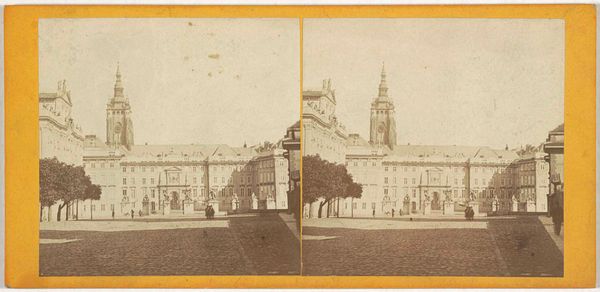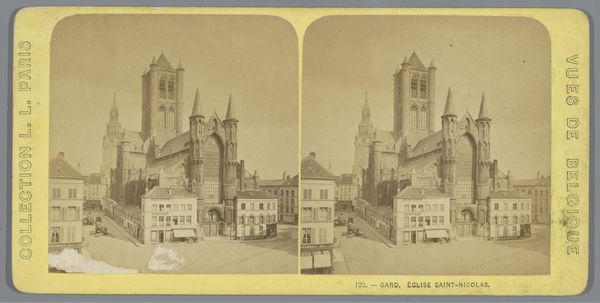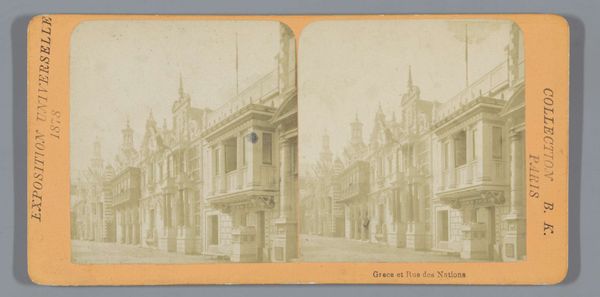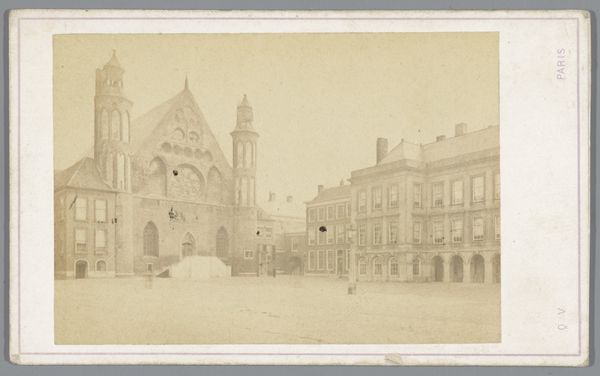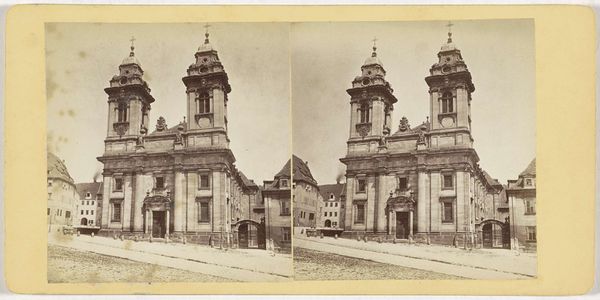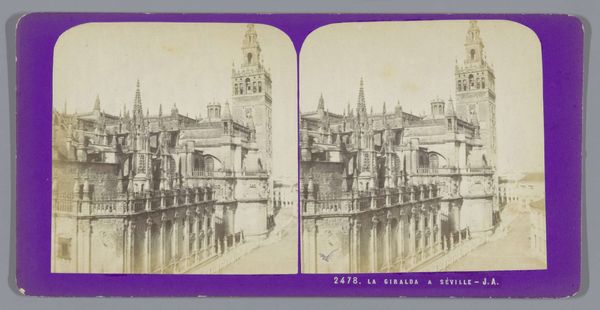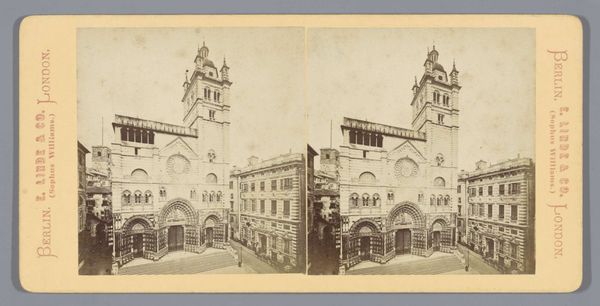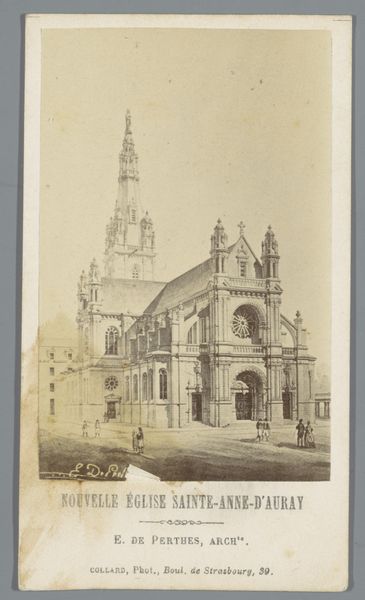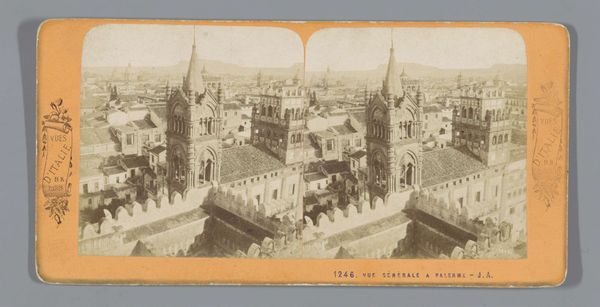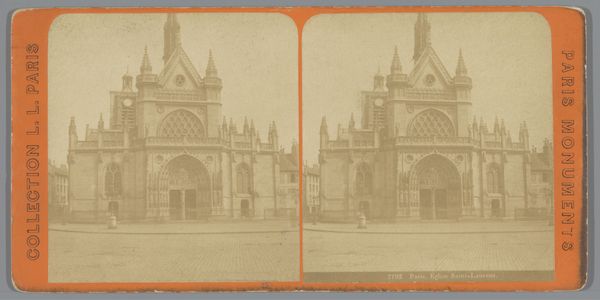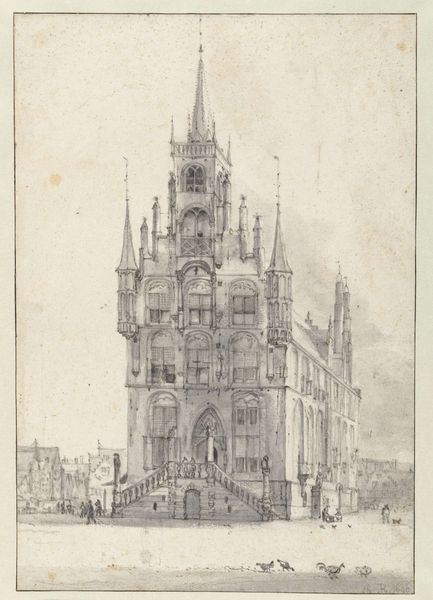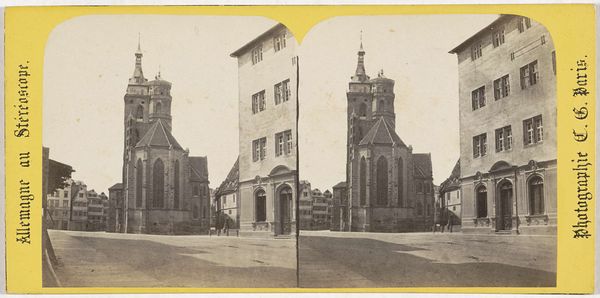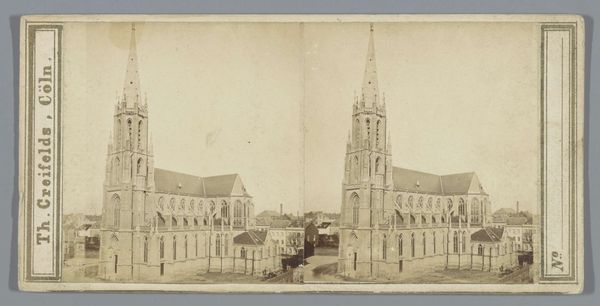
Toren van de Sint-Vituskathedraal of Katedrála svatého Víta, Hradčany, Praag 1855 - 1868
0:00
0:00
print, photography, gelatin-silver-print
# print
#
photography
#
coloured pencil
#
ancient-mediterranean
#
gelatin-silver-print
#
cityscape
#
realism
Dimensions: height 87 mm, width 177 mm
Copyright: Rijks Museum: Open Domain
Curator: Immediately I'm drawn to the meticulous details, it feels almost surgically precise. Editor: Well, this is a gelatin-silver print of "Toren van de Sint-Vituskathedraal of Katedrála svatého Víta, Hradčany, Praag," a cityscape captured between 1855 and 1868 by František Fridrich. What intrigues me is how it presents a monumental architectural assertion in a period ripe with sociopolitical ferment. The church isn't just stone, it symbolizes power, control. Curator: Yes, but consider the craft, the alchemic processes required to create this image! The gelatin silver print, in its day, wasn't just a point-and-shoot affair. It demanded labor, understanding chemical reactions, and skillful darkroom practices. The making of it mirrors the cathedral’s construction—layer upon layer, craft upon craft. Editor: Absolutely, and the historical context of Prague matters greatly. We're looking at an image created during the Austrian Empire. This cathedral wasn't simply a religious structure; it was a potent symbol of cultural and political identity for the Czechs. Fridrich’s photograph is, therefore, an implicit statement about place and belonging within an empire that often sought to suppress local identities. Curator: See, and for me it's about the texture captured; the surface quality created by the printing process! This tangible thing made with specific material. Even the colored pencil, perhaps used for touch-ups, it's about engaging in the artistic possibilities available. Editor: And did those enhancements introduce any changes in the visual storytelling? Perhaps making particular segments of the Cathedral stand out more prominently to convey meanings, considering that architectural structures usually come to represent the values of its elites? Curator: Possibly! Ultimately, seeing art this way for me opens questions of labor value in creating it and where this places within art production as a whole. Editor: Understanding Fridrich's work needs a combined approach; let’s contextualize it, feel it and above all consider its cultural legacy within intersectional paradigms. Curator: A suitable, multi-faceted look at art for anyone experiencing its message and materials, as art is ultimately a cultural statement!
Comments
No comments
Be the first to comment and join the conversation on the ultimate creative platform.
